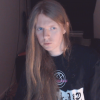David Sinclair Patent on NMN "Derivati...
 Michael
28 Oct 2017
Michael
28 Oct 2017
The invention relates to compositions of nicotinamide mononucleotide derivatives and their methods of use. The invention also relates to methods of preparing nicotinamide mononucleotide derivatives. The invention relates to pharmaceutical compositions and nutritional supplements containing a nicotinamide mononucleotide derivative. The invention relates to methods of using nicotinamide mononucleotide derivatives that promote the increase of intracellular levels of nicotinamide adenine dinucleotide (NAD+) in cells and tissues for treating diseases and improving cell and tissue survival. ...Document Type and Number: United States Patent Application 20170290850
SUMMARY OF THE INVENTIONThe invention relates to compositions of nicotinamide mononucleotide derivatives and their methods of use. In some embodiments, the invention relates to methods of making nicotinamide mononucleotide derivatives. In some embodiments, the invention relates to pharmaceutical compositions and nutritional supplements containing one or more nicotinamide mononucleotide derivatives. In further embodiments, the invention relates to methods of using nicotinamide mononucleotide derivatives that promote the increase of intracellular levels of nicotinamide adenine dinucleotide (NAD+) in cells and tissues for treating diseases and improving cell and tissue survival. ...
Diseases, Disorders and Conditions
Nicotinamide mononucleotide (NMN) is commercially available from such sources as Sigma-Aldrich (St. Louis, Mo.). ...In certain embodiments, the invention relates to the use of compounds and compositions comprising one or more compounds disclosed herein that work through the nicotinamide mononucleotide adenylyltransferase (Nmnat1) pathway or other pathways of NAD+ biosynthesis which have nutritional and/or therapeutic value in improving plasma lipid profiles, prevention of stroke, and/or prolonging life and well-being. Other embodiments relate to a method for preventing or treating a disease or condition associated with the nicotinamide mononucleotide adenylyltransferase (Nmnat1) pathway or other pathways of NAD+ biosynthesis by administering a composition comprising one or more compounds disclosed herein. Diseases or conditions which typically have altered levels of NAD+ or its precursors which can be prevented or treated by supplementing a diet or therapeutic treatment regime with a composition comprising one or more compounds disclosed herein include, but are not limited to, lipid disorders, (e.g., dyslipidemia, hypercholesterolaemia or hyperlipidemia), stroke, type I and II diabetes, cardiovascular disease, and other physical problems associated with obesity.
Neurodegenerative Diseases ... Regulating Blood Glucose Concentration ...Drug Toxicity ... Aging/Stress ... Mitochondrial Diseases and Metabolic Effects ... Retinal Diseases and Disorders ...
It's not clear to me, from a brief skim & scan, what advantage they expect these derivatives to have over the parent compound, beyond patentability.
 able
28 Oct 2017
able
28 Oct 2017
Stability?
Bioavailability?
One line I found interesting:
"daily candidate dose for an adult human of approximately 70 kg body weight will range from about 1 mg to about 1000 mg, preferably between about 5 mg and about 500 mg"
Edited by able, 28 October 2017 - 03:33 PM.
 Michael
28 Oct 2017
Michael
28 Oct 2017
Stability?
I don't know the chemistry, but you'd expect a salt or formulant would do the job; an actual derivative implies some different activity.
Bioavailability?
Maybe ... but you'd expect that to be the claim: "The invention relates to compositions of nicotinamide mononucleotide derivatives with enhanced bioavailability." It's weird.
One line I found interesting:
daily candidate dose for an adult human of approximately 70 kg body weight will range from about 1 mg to about 1000 mg, preferably between about 5 mg and about 500 mg"
They're not quite saying that: doses "will be determined by the clinician using conventional dose escalation studies. It can be expected to be from about 0.0001 to about 100 mg/kg body weight per day; typically, from about 0.01 to about 10 mg/kg body weight per day; more typically, from about 0.01 to about 5 mg/kg body weight per day; most typically, from about 0.05 to about 0.5 mg/kg body weight per day. For example, the daily candidate dose for an adult human of approximately 70 kg body weight will range from about 1 mg to about 1000 mg, preferably between about 5 mg and about 500 mg, and may take the form of single or multiple doses."
 stefan_001
28 Oct 2017
stefan_001
28 Oct 2017
I think its obvious what he is trying. First file IPR on something that is doing more or less the same as plain NMN. There is no real attempt here to make it more efficient, they just want a version thats under IPR and give it a spin like "better bioavailability". Then you do couple clinical trials with that IPR version e.g. together with Elysium H and after that you can claim you have an unique anti-aging product and price accordingly.
 Daniel Cooper
31 Oct 2017
Daniel Cooper
31 Oct 2017
You've answered your own question. Patentablity.
A not insignificant part of drug development is finding a natural compound that has some effectiveness against some disease process, then tweaking the molecule enough to get a patent. If they can actually improve the compound in the process ..... great. But merely achieving patentability is the primary goal.
Edited by Daniel Cooper, 31 October 2017 - 03:01 PM.
 Matt
01 Nov 2017
Matt
01 Nov 2017
Isn't he already rich? Maybe he needs more wealth.
Maybe he's saving to give it all to SENS.
![]() One can hope xD
One can hope xD




